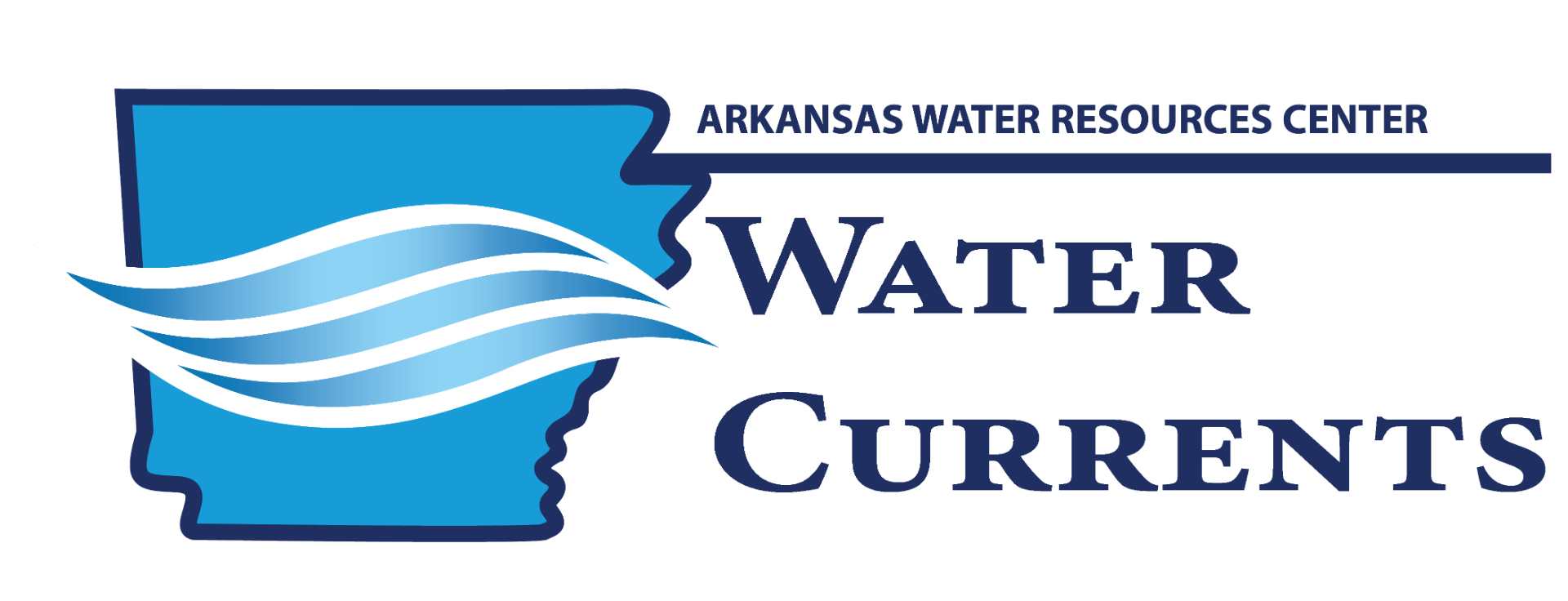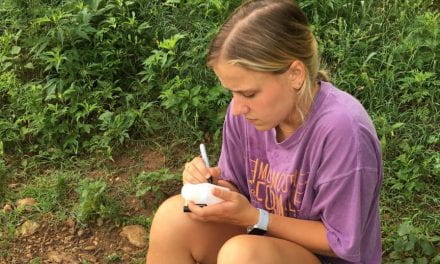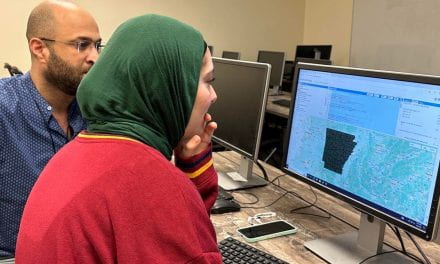
Landsat Imagery Helps Researchers Identify Water Conserving Best Management Practices in Eastern Arkansas

Growing concern over groundwater depletion in the Mississippi River Valley Alluvial Aquifer (MRVAA) has resulted in the implementation of best management practices (BMPs) focused on water conservation within the region. Two prominent BMPs for reducing groundwater use include surface water impoundments and tail water recovery systems.
Surface water impoundments allow producers to store runoff during wetter periods of the year for irrigation later when it is dry. Tail water recovery systems capture excess irrigation water and runoff from fields during rain events and return it to nearby surface water impoundments for storage.
While these practices are becoming more common throughout the MRVAA region, there is little information on where and how many of these reservoirs and tail water recovery systems are present in Eastern Arkansas. One group at the University of Arkansas used Landsat imagery to help close this information gap.
Grant West along with Dr. Kent Kovacs with the Department of Agricultural Economics and Agribusiness at the University of Arkansas, analyzed Landsat imagery from 1995 through 2015 to determine where and when reservoirs and tail-water recovery systems were added within Arkansas county, Arkansas.
Specifically, they modified the provisional Dynamic Surface Water Extent (DSWE) algorithm developed by the U.S. Geological Survey and used it to classify water and non-water pixels within the Landsat imagery. The DSWE algorithm uses surface reflectance and slope characteristics within the Landsat imagery to separate land from water (see image below).

Results of the DSWE algorithm that uses surface reflectance and slope characteristics to separate land from water.
Man-made reservoirs were then separated from natural waterbodies based on size and shape using TerrSet Geospatial Monitoring and Modeling software. High-resolution imagery from the National Agriculture Imagery Program (NAIP) and Google Earth were used to assess the accuracy of the DSWE algorithm’s ability to identify potential reservoirs and tail-water recovery systems.
In Arkansas County man-made reservoirs increased from 160 to 229 between 1995 and 2015 – that’s a 43% increase over the 20-year period. This shows that producers are slowly increasing their reliance on surface water for irrigation purposes.
West and Kovacs also found that their modifications to the DSWE algorithm accurately identified surface water reservoirs 98% of the time using Landsat imagery. These findings, validate their methods for identifying reservoirs throughout the region, reducing the need for expensive and time-consuming sight verification of reservoirs.
Additionally, this work is useful for tailoring programs and policies that can help encourage more surface water use for irrigation, reducing the need to pump water from the MRVAA.
Future work aims to collect groundwater level data, weather patterns, and producer characteristics near the farms where storage systems are present. This should help water managers better understand the factors that potentially drive the decision to implement these water-conserving BMPs.
This research was funded by the U.S. Geological Survey 104B program through the Arkansas Water Resources Center and was published in the 2018 Arkansas Bulletin of Water Research.
















